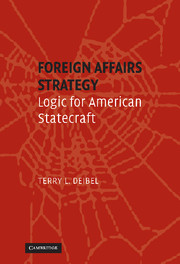1 - Introduction: Defining Strategy
Published online by Cambridge University Press: 05 June 2014
Summary
Rarely if ever in American history has systematic thinking about foreign affairs been more important than it is today. For in the past decade and a half, two extraordinary shocks from abroad have thoroughly unsettled traditional patterns of American statecraft. First, in the fall of 1991, the collapse of the Soviet Union ended the Cold War. Then, in the fall of 2001, coordinated terrorist attacks against the American homeland killed thousands in a single morning.
Taken together, these two shocks radically altered the environment for American foreign policy both at home and abroad. For nearly five decades after World War II the antagonism between Washington and Moscow had structured the world along bipolar lines, setting the parameters of foreign policy for all nation-states. The two superpowers focused on building and defending their alliance systems, while many so-called Third World countries struggled to remain “nonaligned.” Generations of Americans accepted Moscow's threat to the very existence of their country, if not to humanity itself, as a permanent fact of life. Indeed, the Soviet threat was so overwhelming and so widely recognized in the United States that it automatically performed the most essential function of strategic thinking: to set priorities. Containing Soviet power was accepted as the primary objective, the central organizing principle of foreign policy; debate was mostly about how best to implement it. And in that debate, because the threat was ultimately a military one, military means were always a prominent and often the dominant part of the answer.
- Type
- Chapter
- Information
- Foreign Affairs StrategyLogic for American Statecraft, pp. 1 - 32Publisher: Cambridge University PressPrint publication year: 2007



